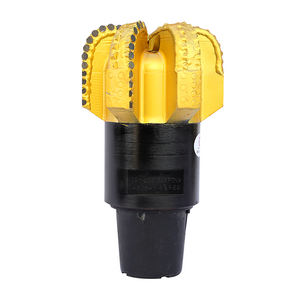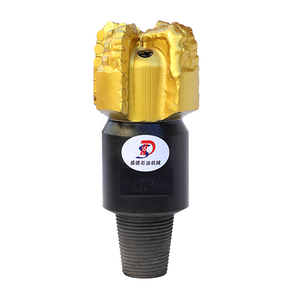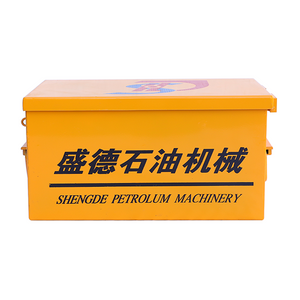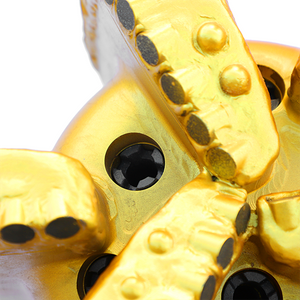Drilling technology has evolved significantly over the years, leading to innovations that improve efficiency and reduce costs. One of the most important advancements in the oil and gas industry is the PDC drill bit. These drill bits have transformed drilling operations by offering superior durability, faster penetration rates, and longer lifespan compared to traditional roller cone bits.
A PDC drill bit is widely used in petroleum exploration, mining, and geothermal drilling, playing a crucial role in making drilling operations more efficient. But what makes these drill bits so special? How do they compare to other drill bits in terms of performance, cost, and application? This article will explore everything you need to know about PDC bits, their types, applications, and advantages.
What Does PDC Stand for in Bits?
The term PDC stands for Polycrystalline Diamond Compact. In the context of drill bits, PDC bits are made using synthetic diamond cutters that are fused onto a tungsten carbide substrate under high pressure and temperature. This process creates an extremely hard and durable cutting surface, making PDC drill bits highly effective for drilling through various rock formations.
Compared to natural diamonds, PDC cutters are more cost-effective to produce and provide enhanced performance in drilling applications. The unique structure of PDC bits allows for efficient cutting of hard rock formations while maintaining durability and resistance to wear.
What is a PDC Drill Bit?
A PDC drill bit is a type of fixed cutter drill bit used primarily in the oil and gas industry. Unlike roller cone bits, which rely on moving parts, PDC bits have a solid structure with no moving components. Instead, they use PDC cutters to shear through rock formations, improving drilling speed and efficiency.
Key Features of PDC Drill Bits:
Polycrystalline Diamond Cutters (PDC Cutters): These cutters provide superior hardness and wear resistance.
Fixed Cutter Design: Unlike roller cone bits, PDC drill bits do not have moving parts, reducing maintenance issues.
High Penetration Rates: The cutting action of PDC bits allows for faster drilling speeds.
Durability: These bits last longer than traditional roller cone bits, reducing the need for frequent replacements.
How PDC Drill Bits Work
PDC drill bits operate by shearing through rock formations rather than crushing them, as roller cone bits do. The PDC cutters create a smooth cutting action, reducing energy loss and improving efficiency. This shearing mechanism allows PDC bits to drill faster while consuming less energy.
Types of PDC Bits
PDC drill bits are primarily categorized into two types based on material composition:
Matrix-body PDC bits
Steel-body PDC bits
Each type has its advantages and is suited for different drilling conditions.
Matrix-body PDC Bits
Matrix-body PDC bits are made from a composite material that includes tungsten carbide. This material provides high resistance to wear and impact, making these bits ideal for drilling through hard and abrasive rock formations.
Advantages of Matrix-body PDC Bits:
High Wear Resistance: The tungsten carbide composition enhances durability.
Better Performance in Hard Rock: These bits are designed to handle challenging drilling conditions.
Longer Lifespan: Less prone to erosion compared to steel-body bits.
Disadvantages:
More Expensive: The manufacturing process is more complex, leading to higher costs.
Brittle Compared to Steel: Matrix-body bits are more prone to chipping or cracking under extreme impact.
Steel-body PDC Bits
Steel-body PDC bits are made from high-strength steel, providing greater toughness and flexibility. These bits are often used in softer formations where impact resistance is more important than wear resistance.
Advantages of Steel-body PDC Bits:
Greater Toughness: Steel bodies can withstand high-impact drilling conditions.
Lower Cost: Less expensive than matrix-body bits.
Easier to Repair: Damaged steel-body bits can often be repaired and reused.
Disadvantages:
Lower Abrasion Resistance: Steel-body bits wear out faster in hard and abrasive formations.
Shorter Lifespan: Compared to matrix-body bits, steel-body bits may need to be replaced more frequently.
Comparison Table: Matrix-body vs. Steel-body PDC Bits
| Feature | Matrix-body PDC Bit | Steel-body PDC Bit |
| Material | Tungsten carbide composite | High-strength steel |
| Wear Resistance | High | Lower |
| Toughness | Moderate | High |
| Cost | Higher | Lower |
| Application | Hard, abrasive formations | Softer formations |
| Repairability | Difficult | Easy |
What is a PDC Drill Bit Used For?
PDC drill bits are widely used in various industries due to their efficiency and durability. Some of the primary applications include:
1. Oil and Gas Drilling
The oil and gas industry heavily relies on PDC drill bits for drilling through various rock formations. Their ability to drill faster and last longer makes them the preferred choice for deep well drilling.
2. Geothermal Drilling
Geothermal energy extraction requires drilling through extremely hard rock formations. PDC drill bits perform well in these conditions, making them essential for geothermal wells.
3. Mining Industry
Mining operations use PDC bits for drilling exploration wells, helping companies locate valuable minerals and resources. Their durability ensures efficient drilling even in harsh environments.
4. Construction and Civil Engineering
In construction projects that require deep foundation drilling, PDC drill bits are used to penetrate hard rock formations efficiently.
Conclusion
PDC drill bits have revolutionized drilling technology by providing a cost-effective, durable, and efficient solution for various drilling applications. Whether in the oil and gas industry, geothermal drilling, or mining, these bits offer superior performance compared to traditional drill bits.
With advancements in PDC cutter technology, future developments will likely enhance their performance even further. As drilling demands continue to grow, PDC drill bits will remain a crucial tool for efficient and economical drilling operations.
FAQs
1. What is the lifespan of a PDC drill bit?
The lifespan of a PDC drill bit depends on the drilling conditions and the type of formation being drilled. On average, PDC bits can last between 100 to 300 hours of drilling, significantly longer than roller cone bits.
2. How do PDC bits compare to roller cone bits?
PDC bits offer faster penetration rates, better durability, and lower maintenance costs compared to roller cone bits. However, roller cone bits may still be preferred in some extremely hard formations where impact resistance is crucial.
3. Can PDC bits be used for all types of rock formations?
While PDC drill bits perform well in most formations, they are less effective in extremely hard and abrasive formations with high impact loads. In such cases, hybrid bits or roller cone bits may be used.
4. How much does a PDC drill bit cost?
The cost of a PDC drill bit varies depending on size, design, and material composition. Prices can range from a few thousand dollars to over $100,000 for specialized high-performance bits.
5. What are the latest advancements in PDC drill bit technology?
Recent innovations in PDC bit technology include advanced cutter designs, improved thermal stability, and enhanced wear resistance. These developments help extend bit life and improve drilling efficiency in challenging environments.

















